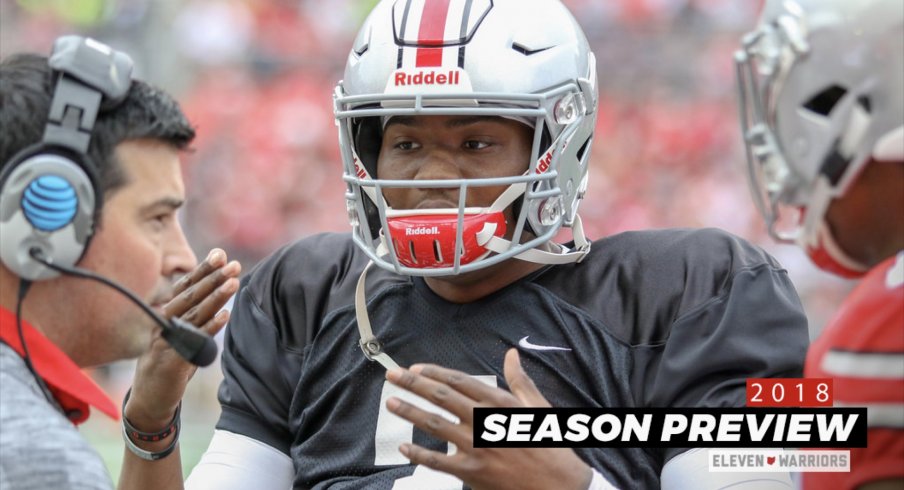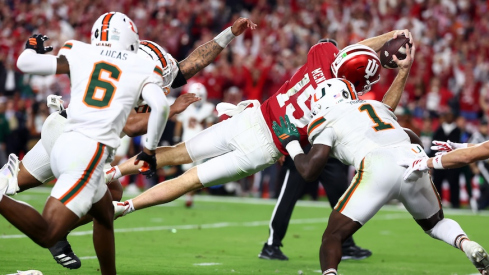Barring disaster, the Dwayne Haskins era in Columbus is now upon us.
For the first time since Todd Boeckman lined up under center in 2007, the Ohio State football program enters fall camp with a pass-first quarterback as the clear starter. While the Buckeyes’ move to more athletic quarterbacks mirrors the sport at large over the past decade, Haskins’ presence in the huddle will seemingly mark a major change in philosophy for Urban Meyer’s offense.
While some fans welcome a style of play more likely to generate big plays from the passing game, others have been cautious to simply say goodbye to the efficient, ground-and-pound style that though predictable, has been incredibly successful for Meyer. But unlike the disorganized system that failed to account for the strengths of Cardale Jones after he won a training camp battle with J.T. Barrett in 2015, Haskins is far better set up for success.
As has been discussed countless times here and elsewhere, Haskins’ position coach and play-caller, Ryan Day, brought much of Chip Kelly’s playbook with him to Columbus last year. As a result, I spent much of the 2017 season focused on the new pieces he added to Buckeye game plans, such as the crossing routes featured in Mesh, his favorite downfield concept known as Saints, and his focus on incorporating bubble screen ‘reliefs’ into the running game.
But another common passing concept that can be found in every playbook across the country was often overlooked last fall, despite its effectiveness for Barrett and the Buckeyes. With roots in Bill Walsh’s west-coast system, the Snag concept has many names, such as Spot, Z-in, or more simply, Triangle.
The last name is the most literal, as it creates the all-important triangle stretch that combines a vertical stretch with a horizontal stretch, meaning it should work against any man or zone defense thrown its way.
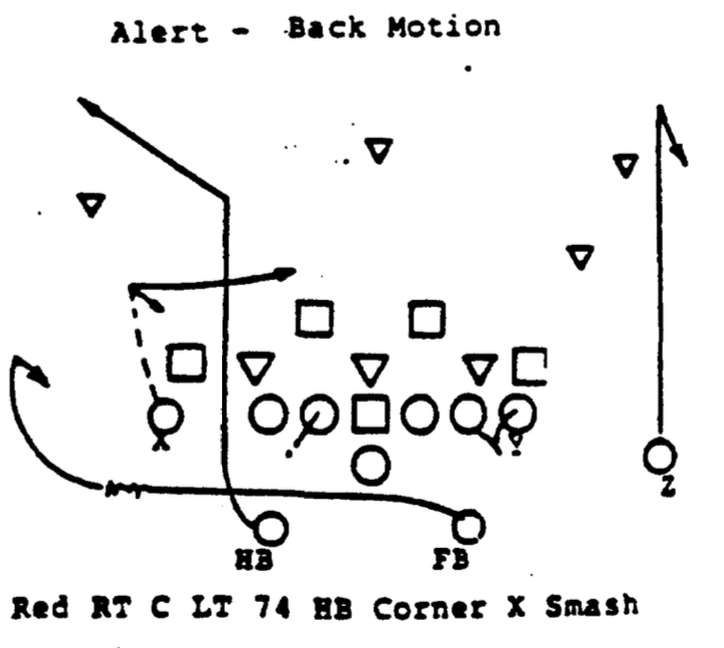
Walsh experimented with many different versions of such triangles, sending backs in receivers in motion to overload one side with three receivers at once, a rarity for the times. But even if the defense was in man-coverage, following every receiver with a dedicated defender, there was always a route built into the play meant to create separation from a defender in man – such as a deep corner or post pattern that left the defender isolated in coverage downfield.
As Walsh’s playbook evolved in the hands of talented protégés like Mike Holmgren, Mike Shanahan, and the many others that populate his vaunted coaching tree, the concept of triangles was refined into a pair of plays that stressed defenses most. Over time, Snag and its close cousin, Stick, were adapted and adopted into virtually every playbook across the nation, regardless of level.
While Stick became the preferred triangle stretch for the early spread and Air Raid connoisseurs due to its quick-hitting nature, making it a perfect concept to attach to a run play in the early days of run/pass options, Snag found its place among traditionalists with drop-back passing games. But what provided Snag with staying power as many West Coast playbooks were discarded is the quarterback's relatively easy read.
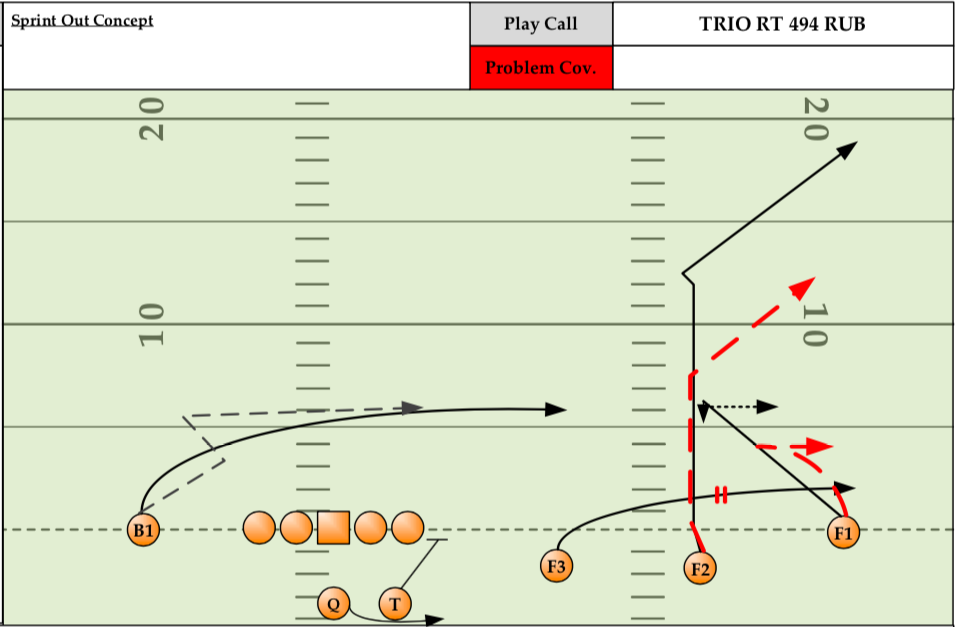
Typically, the passer reads deep-to-short on this play, looking first for the deep corner route. But in Meyer's first five years in Columbus, the Buckeyes only called for the concept in short-yardage and goal-line situations, sprinting out the quarterback to one side and using the intermediate "snag" route to act as a natural pick (which appears at first like a typical one-step slant before the receiver settles down after six yards), creating a barrier between the receiver running an underneath flat route and his defender.
Since Day came to town, however, the concept has been unleashed to its full potential, offering the Buckeyes a way to spring receivers open in any number of situations. When called as a play-action or drop-back pass, the progression is from deep-to-short, looking first to connect on the deep corner route.
If the defense is in man-coverage (as seen below), that receiver should be hitting his break at the same time the quarterback sets his back foot at the top of his drop, creating separation from the defender in coverage while running away from the free safety patrolling the middle of the field.
If the secondary is in a traditional zone or pattern-matching defense, though, the snag route should flash open with the receiver settling in the seam between two defenders. Not only does this give the quarterback a nice, big target, but the receiver should have the chance to pick up a few yards after the catch.

Finally, if the first two routes are covered, the quarterback should have the underneath route in the flat open, often run by a back, tight end, or slot receiver. The throw should lead the receiver away from the nearest defender, giving him a chance to pick up yards in the open field.
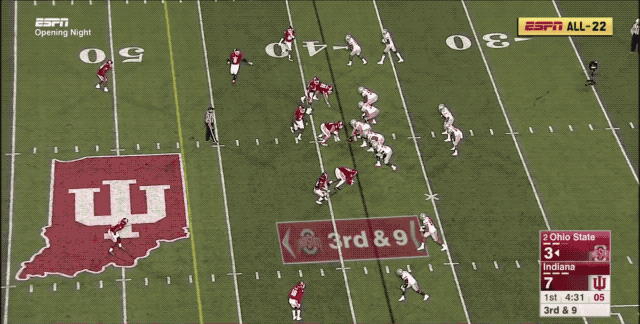
As seen in all the examples above, the concept can be executed from virtually any formation, be it a 3x1, 2x2, or even a two-back set like the ones often used by Walsh and his contemporaries. Yet regardless of the defense or formation, the read is the same for the QB, making it an invaluable swiss army knife for a new field general.
However, Day does more than simply call it from multiple sets to make it easier for his passers.
As we already mentioned, the Buckeyes relied heavily on bubble screens attached to running plays, creating a triple-option for the QB as opposed to the typical option running play to which we've all grown accustomed.

When the player receiving those bubble screens is Parris Campbell or K.J. Hill, the potential to break such a play for a huge gain is ever present, meaning the defense must always account for not only the inside run but also the screen. As we saw countless times last fall, that threat helped spring rushers J.K. Dobbins and Mike Weber for big gains, with the alley defender left guessing as to the direction of the ball.
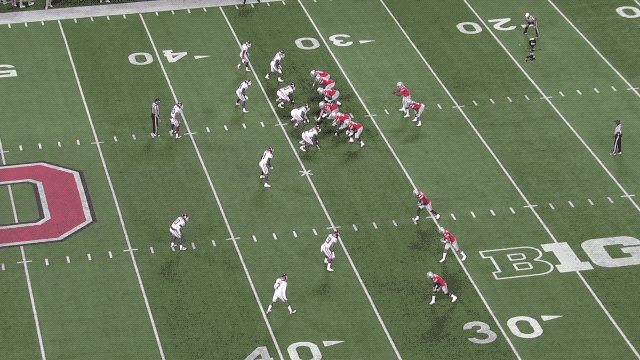
As seen above, the Oklahoma defense removes three defenders from the box to account for the three split receivers, leaving the middle linebacker (#9) as the alley defender. His hesitation gives Jamarco Jones at left tackle enough time to get up to the second level, cutting him off from making the play and leaving Dobbins all alone in the open field, a scenario that will always be in Ohio State's favor.
After running the same exact play again on the next snap, once again picking up a first down on a Dobbins carry, the Buckeyes stay in their 3x1 set with the three receivers to the field. Though it appears to be the same call yet again, with Barrett sticking the ball in Dobbins' belly and Campbell running a bubble route, this time the play is quite different.
Now, instead of setting blocks, outside receiver Johnnie Dixon runs the snag while #2 receiver Austin Mack hits the corner route. But although the cornerback (#7) is responsible for the deep, outside zone in this pattern-matching defense, he can't help but bite on the bubble action, leaving an open window for Barrett to hit Mack for a huge gain.
This style of combining or masking simple concepts as one another is straight out of Kelly's playbook and is a big reason Nick Foles made the Pro Bowl in 2013 while under the tutelage of both Kelly and Day. Though Day called upon the bubble element quite often with Barrett under center last fall, the Snag calls were less successful due to the degree of difficulty the deep corner route brings with it.
Though it often sprung open, many teams simply dared Barrett to fit the throw in between an underneath defender sitting on the bubble and a deeper defender with leverage over the top. Given that the concept was often called to the wide side of the field, this was the kind of deep ball with which Barrett struggled throughout his career, leading to a number of missed throws.
With a different skill set than his predecessor, though, Haskins has already shown he's capable of delivering such passes with precision.
As Day and the other offensive coaches enter the 2018 campaign, there's no need to re-write the playbook for their new QB. Instead, by disguising their best plays to look like one another as they've already done, the offense should already be set up for success.
